 
|
||||
|
|
APOCALYPSE |
|||
|
Traveling back further with the Salvatori family history in a musical context, way back in 1976, when he was in high school, Tom teamed up with his older brother Michael, Michael’s wife Gail Salvatori and his classmate Scott Magnesen and under their band name, Apocalypse, they together recorded a demo tape of original and pure progressive rock magic called The Castle. Although the 5-song, 38-minute demo was an amazing showcase for their collective progressive rock leanings, The Castle remained an unreleased artifact until 2021 when the reel-to-reel master tape of the presumably long-lost relic was rediscovered by Michael in a dusty old basement storage bin.
One listen to the 1976 recording of The Castle gives an early impression that Michael, Tom and Gail were destined for further musical greatness. Michael and Gail (married in 1973) were within months of starting their family, while at the same time Tom and Scott were getting ready to attend college, so as it turned out, Apocalypse as a band was only able to record one album worth of material. As you listen to this album 46 years later you can fully appreciate the cool things and underrated sounds that came out of the unique music magic these musicians created. Tom, playing bass and second guitar, classical guitar and bass pedals on The Castle, has worked wonders over the past 20 years, releasing a wide range of his instrumental progressive classical, nylon stringed guitar music on his Salvatori Productions, while Gail Salvatori (all keyboards, synths, and very notably violin) went on to perform with Mannheim Steamroller’s and Orbert Davis’ Chicago Jazz Philharmonic live shows and is currently back in studio working on producing albums featuring instrumental hymns. Apocalypse drummer Scott Magnesen still plays drums in various Chicago-area bands. Although a democratic sounding band, featuring vital contributions from all four members, The Castle is an excellent introduction and showcase for the music, vocals, acoustic and electric guitar playing of Apocalypse band leader and composer Michael Salvatori. Although he hasn’t made a solo album since his outstanding 1982 Waiting for Autumn, Michael went on to write commercials for TV and radio throughout the 1980’s and ‘90s and more recently he rose to prominence scoring music for the HALO video game franchise with his writing partner Marty O’Donnell. He is now composing and recording music for the Destiny video game franchise soundtracks. He also worked with Paul McCartney on the original Destiny score. Following years of musical greatness from Tom, Michael and Gail Salvatori, it’s a good time to look back at the progressive rock roots of a family of gifted American musicians. And now with Out-Sider’s vinyl only reissue of the one and only Apocalypse album, The Castle is set to finally be listened to in the spirit in which it was made.
Advance CDs available for review and more information on Apocalypse contact: rockrosemusicpr@gmail.com
mwe3.com presents a new interview with
Tom Salvatori: Yes - you can certainly tell who our influences were - the album acts as a travelogue of sorts through the prog rock years of Genesis, Yes, Renaissance, Kansas…with the violin, Gentle Giant…with the recorders. mwe3: You'll have to excuse me because I didn't know Michael was so heavily involved with video game soundtrack instrumentals these past twenty years and then I saw him working with Sir Paul McCartney on the instrumental music for the original Destiny soundtrack, which was so amazing! I think McCartney would enjoy The Castle. How in the world did Mike do so many of these video game soundtracks? His latest music is so majestic and surreal, is the surrealism part of his intent? It's really different from what I expected, but I love it. Tom Salvatori: Yes, since our early prog rock days Mike has grown as a composer - from writing for a rock band to now writing for full orchestra and full choir. It’s all very powerful…and dynamic…but he has always stayed rooted and down to earth and somewhat percussive in nature, after all I still believe he’s a rock star at heart, which is one of the reasons his stylings work so well with video games and connect so well with his intended audience. Although, in addition to the majestic and surreal stylings, he can compose ethereally beautiful music too; check out “Never Forget” and “Remembrance” as great examples of works that will just melt the hardest of hearts... Visit Mike’s Composer site (MichaelSalvatori.com)
Tom Salvatori: Well, when Mike found the master demo reel-to reel, we held our breath as we sat and listened for the first time – as we were worried if the tape would even play back, but once we heard the quality was intact and we settled in to listening - it brought back a flood of many good memories, not only of the songs we did in the studio that day but also playing the music live in the handful of shows we performed at the local colleges. The back story is that we had given the tape up for lost after Mike suffered a studio fire in 1999… and we were certain it was gone forever. When it showed up in the bottom of a dusty old storage bin last year it was truly a musical miracle for us that we were able to listen to our band at the pinnacle of our fully operational mode again. mwe3: Or maybe, is it just an unearthed curio picked up by some very obscure label from Spain? That seems very strange to me! It really adds depth and dynamic to the legacy. How did you meet Guerssen? …somebody knew somebody right? Tom Salvatori: Steve Krakow, aka author of the Plastic Crimewave feature in The Reader, Chicago’s insider weekly newspaper, had recently completed an article about Mike’s Waiting For Autumn solo release (from 1982), and as such we were in dialogue with Steve. When he heard that we found an old band master tape from 1976 that had never seen the light of day he had a hunch we had found something special and reached out to his friends at Guerssen Records - who specialize in folk/prog/psychedelic rock and reissue releases - and they were immediately interested. Guerssen and their several sub-labels are a retro-vinyl company and out of respect for them we agreed to stay true to their mission of presenting our work as originally intended - a vinyl-only release. It may come out on CD down the road, but for now we are looking forward to hearing it as originally intended - a vinyl LP - which fulfills a rock star dream of ours from back then!
Tom Salvatori: Gail is of course so happy we found the tape too. When she heard it, the memories of her pre-children time with Mike…our family…our band…and our performances all came rushing back! I used to make her laugh all the time being Mike’s little brother - in all of that glory - and I was always the funny guy in the band. But after we listened more closely to the tape, I realized that I made her laugh perhaps one too many times because while she was performing her “I am the spirit…I am the dove” harmony part on “The Spirit” – the fact that I can hear a little laugh on her vocal take 46 years on is extra special to both of us. Regarding Gail’s violin – I agree, every time we played “The Castle” I held my breath during Gail’s violin solo – coming from first chair violinist at Wheaton College, she mesmerized and completely silenced our audiences when we played “The Castle” live. You literally could hear a pin drop. Her solo section in “The Castle” is the highlight of the album for me…and I don’t even play an instrument during that part! Mike and Gail raised 4 daughters and have 19 grandchildren. And Mike takes the whole family…yes, all 29 of them - on vacation to the beach houses in Michigan every summer. mwe3: What's your relationship like with Michael these days?
Suffice it to say I think I’m winning the argument and that it will be my music that wins at the finish line in 250 years …the Tortoise always beats the Hare, right? But of course only time will tell! mwe3: The guitar work is brilliant on The Castle and that brilliance carried seamlessly into Mike’s Waiting for Autumn album. Tell us about the guitars Mike featured on The Castle and Waiting for Autumn. Also, tell us about your double-neck and your classical guitar used on the Apocalypse album. The recorders sound great on ‘Turning Around” and then the epic “All the People.” The way Gail’s organ coming in on the second half of “All the People” is just pure prog rock energy. Tell us about the guitar / keyboard sound at the end. You play classical guitar on that track too. Tom Salvatori: Mike composed on and played the acoustic and electric guitars on all the songs. I played bass and second electric guitar when needed. When I would play second guitar I would play the detached bass pedals from Gail’s Hammond M-3 while channeling my best inner-Mike Rutherford from Genesis! Brother Mike played exclusively on his gritty walnut-body Gibson SG when playing electric and played his Epiphone Acoustic throughout the quieter sections. I played my Ibanez 4/6 double neck guitar and my 1972 Hernandis Classical Guitar on “All the People.” It was our epic “show stopper” of a song; composed in the same vein as the finale piece ”Epilogue” on Waiting for Autumn I suppose. “All the People” had everything going on through it – for me it was several sections of bass lines, bass pedals, second guitar parts here and there and then of course the classical guitar interlude. We always loved performing it live – and transitioning from the classical guitar interlude to Gail’s Hammond organ part was a highlight and a crowd favorite in anticipation of the build-up to the crescendo ending. That classical guitar really changed my life…because of space restrictions in the dorms when I went away to college, I only brought my classical guitar with me. I fell in love with the intimacy and warmth of playing it then and have used it to compose and record every guitar piece I’ve ever released on Salvatori Productions. Visit Record Label site (SalvatoriProductions.com) and Tom’s Guitar Composer site (TomSalvatori.com) mwe3: Continuing on with “All the People,” it sounds like you, Mike and Gail were inspired by King Crimson and Keith Relf and his sister Jane on the first Renaissance album from 1970. There’s a very cool ending that takes the song to unbelievable crescendos!
mwe3: Little was known of Gail. Her keyboard skills on the album are excellent. She had a very fluid style. Tell us about what Gail did after The Castle era? What about her new stuff? You said she’s doing hymns as instrumentals? Tom Salvatori: A few months after we recorded the songs from The Castle Gail and Mike started their family and Scott and I went away to college. With four daughters, she was a busy mom, but stayed active in music, finishing her degree at Wheaton College and performing violin and teaching piano…playing keyboards at church. After the kids were grown, Gail became the Orchestra Director at the prestigious Timothy Christian High School in Elmhurst IL, our hometown, and continued to perform violin professionally, with Mannheim Steamroller and Orbert Davis among others. Since retiring from teaching, she has focused on creating albums of instrumental hymns. Visit Gail’s Music site (BelleArteStrings.com) mwe3: Tell us about Gail’s keyboards. In addition to the highly coveted Hammond M-3 were there mellotrons used? Did she double the melody lines with Mike’s guitars? She sounds like she had it together as a cool prog keyboardist. It’s like she came out of nowhere. What were rehearsals like?
mwe3: Like you, Scott Magnesen your drummer/percussionist was only 17 when the demo was recorded; and his work sounds excellent. You guys had a great fusion of sounds, in a jazzy way and Scott pushed the sound nicely! He had a cool snare sound too. Did you keep in touch with Scott and does he know you found the master tape? He seemed to have no problem with jazz or rock. Tom Salvatori: Initially, Apocalypse had some difficulty finding a drummer that could handle Mike’s composing nuances. It seemed that the couple drummers we tried were more 4/4 rock drummers, so Mike’s writing would leave them behind at times. Scott and I met in High School and when he finally came to rehearsal, he just blew Mike away. He had a tightness and a powerful capability to his playing that led the band and yes, we followed his lead…as you say he pushed the sound…and yes, his snare was a special part of his playing…especially his quick snare roll into a downbeat. Honestly, Mike felt like we had a budding Bill Bruford on our hands, so he quickly became a huge part of the band, and our work really began to coalesce around Scott and his unbridled, yet very precision-oriented, energy. Like us, Scott is looking forward to the LP release. mwe3: What about the cover art of The Castle? I guess it’s newly commissioned cover art, right? Is there any significance in the art?
mwe3: 1976 was a turning point year for music. Disco was everywhere yet prog rock held its own and really was spreading out worldwide. How do you remember 1976? Were you listening to prog-rock at the time? Such an important year, looking back. Was it hard for Mike to stop Apocalypse and raise a family, as you said, growing to 19 grandchildren? What else did Mike and Gail do after the band stopped? You said you went into the advertising agency field. I think everybody our age, born in the 1950s, wants to go back to 1976 and relive the golden magic and I think The Castle perfectly conveys that in effect! Tom Salvatori: Funny you mentioned Disco. We all had a general dislike for it. In fact, I recall that Disco was somewhat disliked locally throughout the Chicago area. One of our local rock radio DJ’s (Steve Dahl) was famous for hovering above the entrance of Chicago Stadium in his radio station’s helicopter just to mess up the hair of the people choosing to attend a Disco concert there. His antics got wildly out of hand though when he hosted a ‘Disco Demolition Night’ at the White Sox Comiskey Park between games of a double header. When they blew up the 40,000 disco records that the fans had brought to gain admission in center field that night, the fans all rushed the field. A giant party broke out and the second game had to be postponed. But I digress.
mwe3: Tell us about your new album Seven Guitar Miniatures. It sounds in the spirit of Respite Guitar but there’s not a “nature suite” side-long type of piece. I really liked the Nature Suite on Respite Guitar. When did you write and record Seven Guitar Miniatures? I see it came out on CD in the Fall of 2021? Tom Salvatori: The goal with my music is to keep my head down, tend to my knitting and to record the pieces that I’ve composed that move me personally. I’ve been doing that since 1995 and have amassed a catalogue of over 200 pieces for guitar. As I get closer to retirement age, I plan to go back and create sheet music for my body of work. I’m an anomaly among classical guitarists in that I play and compose entirely by ear. And due to the popularity of streaming these days I’m getting more and more requests from folks who want to learn to play this piece or that piece, so I will look forward to creating some sheet music for my guitar pieces starting in 2022. mwe3: Tell us more about what your brother Michael Salvatori has planned for 2022? Is Salvatori Productions planning to release other albums in 2022? Could there ever be an Apocalypse reunion?
Regarding Salvatori Productions, we’ve expanded our roster to include AAA/Americana Singer-Songwriter Paul Christian and the R&B/Funk Band from Brazil called Buda and the Monks, so we will look forward to releasing more under their creative umbrella. We are also intent on someday revisiting my solo guitar and the late Iris Litchfield solo piano albums and adding chamber string ensemble arrangements for re-release consideration. And please…don’t wish an Apocalypse reunion upon the world, Mike says that after this article publishes, we won’t be able to afford Gail anymore!
|
|
|||
|
||||

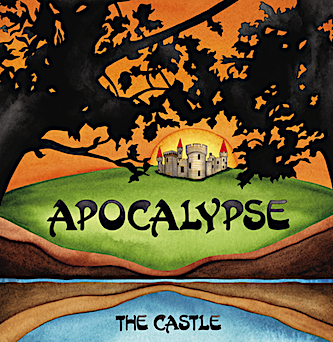 Back in 2002, I was introduced to the music of Chicago-area guitarist Tom Salvatori. Tom had then released his lullaby-styled original instrumental album Late Night Guitar, which is described as ‘a children’s album disguised as an excellent, meditative study in the healing power of the nylon string guitar’. Late Night Guitar turned out to be a cool introduction to Tom’s unique nylon-string progressive classical music compositions. A visit to SalvatoriProductions.com, the boutique label started by Tom and brother Michael in 1995, reveals it has grown to 30+ albums in its catalog, and offers keen insights into Tom’s musical background and merges with his interest in progressive rock guitarists such as Steve Hackett, Anthony Phillips and Steve Howe – guitarists very influential in the classical guitar genre and its impact on the art of progressive rock guitar. Tom’s 2020 album, Respite Guitar, was recently followed up by his 2021 album called Seven Guitar Miniatures, both released on the Salvatori Productions label.
Back in 2002, I was introduced to the music of Chicago-area guitarist Tom Salvatori. Tom had then released his lullaby-styled original instrumental album Late Night Guitar, which is described as ‘a children’s album disguised as an excellent, meditative study in the healing power of the nylon string guitar’. Late Night Guitar turned out to be a cool introduction to Tom’s unique nylon-string progressive classical music compositions. A visit to SalvatoriProductions.com, the boutique label started by Tom and brother Michael in 1995, reveals it has grown to 30+ albums in its catalog, and offers keen insights into Tom’s musical background and merges with his interest in progressive rock guitarists such as Steve Hackett, Anthony Phillips and Steve Howe – guitarists very influential in the classical guitar genre and its impact on the art of progressive rock guitar. Tom’s 2020 album, Respite Guitar, was recently followed up by his 2021 album called Seven Guitar Miniatures, both released on the Salvatori Productions label.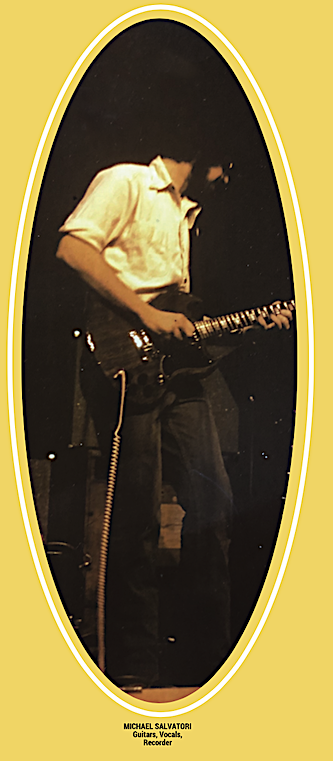 For those who don’t remember 1976, it was a period of great musical progress and reflection following what is commonly referred to as the first golden era of progressive rock of 1969-1975. Fundamentally starting in that earthy 1968 - 1969 timeframe, U.K. rock bands such as YES, Renaissance, Genesis and Gentle Giant had collectively changed the world of rock music and for younger musicians, including the Salvatori family, that style was greatly reflected in their own approach to progressive rock. Music fans can be thankful that Michael’s rediscovery of the Apocalypse master tape has now led to a vinyl-only reissue of The Castle, a March 2022 release on Guerssen’s Out-Sider Records (Spain, visit Guerssen.com). Why vinyl only? … perhaps because that’s the way we all listened to music in 1976.
For those who don’t remember 1976, it was a period of great musical progress and reflection following what is commonly referred to as the first golden era of progressive rock of 1969-1975. Fundamentally starting in that earthy 1968 - 1969 timeframe, U.K. rock bands such as YES, Renaissance, Genesis and Gentle Giant had collectively changed the world of rock music and for younger musicians, including the Salvatori family, that style was greatly reflected in their own approach to progressive rock. Music fans can be thankful that Michael’s rediscovery of the Apocalypse master tape has now led to a vinyl-only reissue of The Castle, a March 2022 release on Guerssen’s Out-Sider Records (Spain, visit Guerssen.com). Why vinyl only? … perhaps because that’s the way we all listened to music in 1976.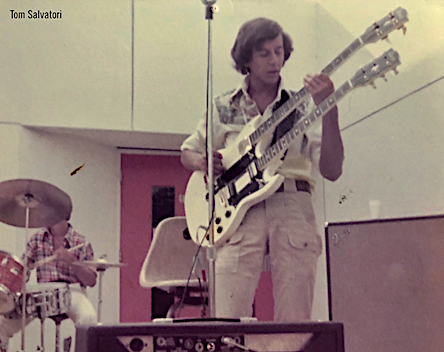 mwe3: The Castle certainly presents such an extensive history of music.
mwe3: The Castle certainly presents such an extensive history of music.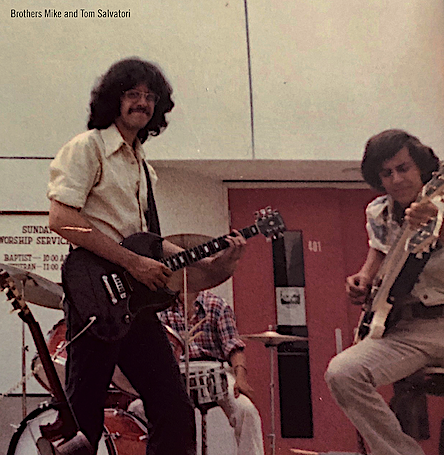 mwe3: What's Michael’s intent in releasing The Castle album 46 years after it was recorded? He surely knows it's excellent and was tragically overlooked. It's a musical masterpiece...that took a long time! I guess he’d say the same thing you say as you played on the album and saw his intent back then. What does he say now?
mwe3: What's Michael’s intent in releasing The Castle album 46 years after it was recorded? He surely knows it's excellent and was tragically overlooked. It's a musical masterpiece...that took a long time! I guess he’d say the same thing you say as you played on the album and saw his intent back then. What does he say now? 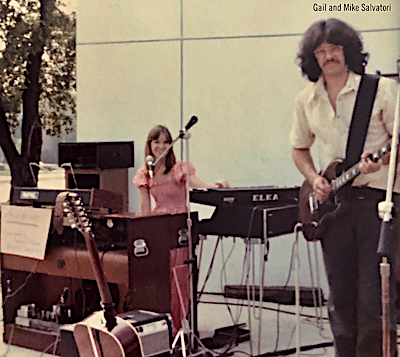 mwe3: And with Gail, what's her involvement? Her keyboard and violin work on the album is brilliant. And coming right in with Male/Female harmonies on “The Spirit” is a welcome introduction to Gail and her fantastic vocal support for Mike. The harmonies are spot on. And her violin solo on “The Castle” will bring grown men to tears!
mwe3: And with Gail, what's her involvement? Her keyboard and violin work on the album is brilliant. And coming right in with Male/Female harmonies on “The Spirit” is a welcome introduction to Gail and her fantastic vocal support for Mike. The harmonies are spot on. And her violin solo on “The Castle” will bring grown men to tears! 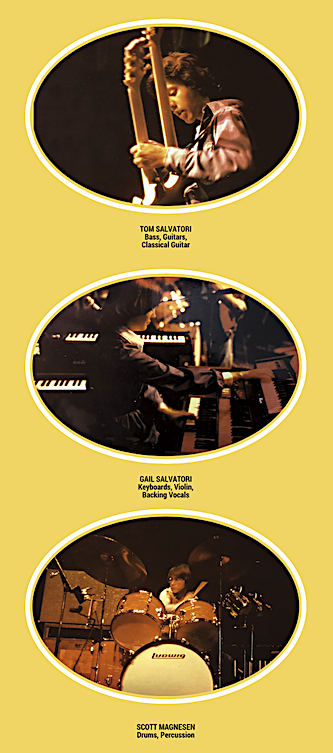 Tom Salvatori: Mike and I are best friends, talking, texting, watching hockey and/or sharing a meal several times a week. We have a friendly banter back and forth that revolves around whose music is going to be more popular in 250 years after we are gone. I accuse him of selling his soul to Satan because of the success he has achieved with jingles (Flintstones Kids Vitamins) and with video games scores (HALO and Destiny) and he argues that my guitar releases are rampant with “Tom-isms” – which drives me crazy because then he says he can’t really define a “Tom-ism.”
Tom Salvatori: Mike and I are best friends, talking, texting, watching hockey and/or sharing a meal several times a week. We have a friendly banter back and forth that revolves around whose music is going to be more popular in 250 years after we are gone. I accuse him of selling his soul to Satan because of the success he has achieved with jingles (Flintstones Kids Vitamins) and with video games scores (HALO and Destiny) and he argues that my guitar releases are rampant with “Tom-isms” – which drives me crazy because then he says he can’t really define a “Tom-ism.”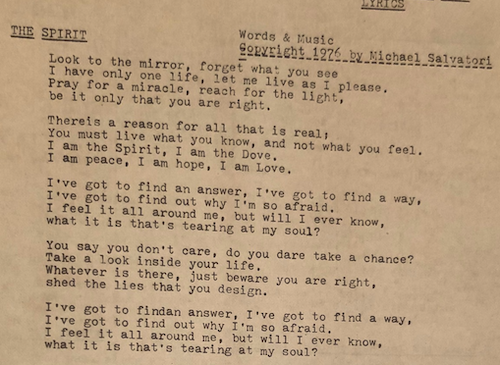 Tom Salvatori: We listened to a ton of music growing up…and everything was new and fresh, and every release by every band we listened to back then had such gravity and was such a mile marker on the newly paved road to prog rock heaven for us. I think Renaissance, Genesis and Yes were our all-time favorites, but right behind them were phenomenal bands like King Crimson, Gentle Giant, Jethro Tull, PFM, Kansas…I could go on and on, but these were literally our heroes. Some passages in Mike’s composing introduce themes and very patiently would combine with other themes and build and then build some more to climactic crescendos that make it hard to believe can all be parts of the same song. “All the People” and “The Castle” are good examples of song endings that have strayed extremely far from their song beginnings.
Tom Salvatori: We listened to a ton of music growing up…and everything was new and fresh, and every release by every band we listened to back then had such gravity and was such a mile marker on the newly paved road to prog rock heaven for us. I think Renaissance, Genesis and Yes were our all-time favorites, but right behind them were phenomenal bands like King Crimson, Gentle Giant, Jethro Tull, PFM, Kansas…I could go on and on, but these were literally our heroes. Some passages in Mike’s composing introduce themes and very patiently would combine with other themes and build and then build some more to climactic crescendos that make it hard to believe can all be parts of the same song. “All the People” and “The Castle” are good examples of song endings that have strayed extremely far from their song beginnings.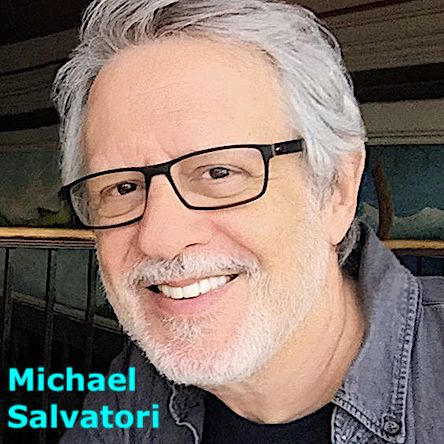 Tom Salvatori: Gail’s keyboard set up included her Hammond M-3, a Univox Mini-Korg, an RMI Electra Piano, and an Elka Rhapsody String Ensemble. Rehearsals were fun – probably because it was family, but the music was a lot of preparation and hard work. Mike was without question the leader of the band, the main composer, the lead guitarist and the lead vocalist. He knew what he wanted to hear, and everything was simply in his head. We had creative freedom within the context of our instruments, but the song structures, transitions, themes, lyrics and harmonies were composed by Mike. I guess there’s some innocent naivety to being 17 and being a younger brother, because no matter what Mike asked me to do on bass and guitar, I just did it without any consideration of whether I could accomplish it or not. Everything is possible to a 17-year-old kid!
Tom Salvatori: Gail’s keyboard set up included her Hammond M-3, a Univox Mini-Korg, an RMI Electra Piano, and an Elka Rhapsody String Ensemble. Rehearsals were fun – probably because it was family, but the music was a lot of preparation and hard work. Mike was without question the leader of the band, the main composer, the lead guitarist and the lead vocalist. He knew what he wanted to hear, and everything was simply in his head. We had creative freedom within the context of our instruments, but the song structures, transitions, themes, lyrics and harmonies were composed by Mike. I guess there’s some innocent naivety to being 17 and being a younger brother, because no matter what Mike asked me to do on bass and guitar, I just did it without any consideration of whether I could accomplish it or not. Everything is possible to a 17-year-old kid!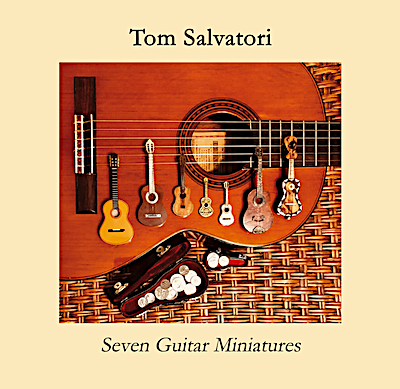 Tom Salvatori: When we signed with Guerssen, they wanted to create a special cover that would have been at home in the 1970’s – and the early Renaissance album artwork came to mind. Steve Krakow’s once again stepped in and recommended his girlfriend, Sara Gossett, who was commissioned to develop the album art. She had completed projects for Guerssen and many others in the past as she specializes in psychedelic 1960s-70s vintage stylings that are “inspired by the golden age of dreamscapes and nostalgia.” She was specifically drawn to our work by hearing the album itself while Steve was reviewing it, and she captured the spirit of the ‘faraway castle’ that Steve mentions in the liner notes that he subsequently wrote for the album release. Many thanks go out to Steve for really bringing this album to the light of day, without his involvement we never would have signed with Guerssen or met Sara, who really carried the ball forward with her album art. And, needless to say, we were very, very pleased with Sara’s cover art, and feel that it perfectly conveys the era, the sensibility and vibe of Mike’s songs, especially focused on the title song “The Castle.” Visit Sara’s art site (SaraGossett.com)
Tom Salvatori: When we signed with Guerssen, they wanted to create a special cover that would have been at home in the 1970’s – and the early Renaissance album artwork came to mind. Steve Krakow’s once again stepped in and recommended his girlfriend, Sara Gossett, who was commissioned to develop the album art. She had completed projects for Guerssen and many others in the past as she specializes in psychedelic 1960s-70s vintage stylings that are “inspired by the golden age of dreamscapes and nostalgia.” She was specifically drawn to our work by hearing the album itself while Steve was reviewing it, and she captured the spirit of the ‘faraway castle’ that Steve mentions in the liner notes that he subsequently wrote for the album release. Many thanks go out to Steve for really bringing this album to the light of day, without his involvement we never would have signed with Guerssen or met Sara, who really carried the ball forward with her album art. And, needless to say, we were very, very pleased with Sara’s cover art, and feel that it perfectly conveys the era, the sensibility and vibe of Mike’s songs, especially focused on the title song “The Castle.” Visit Sara’s art site (SaraGossett.com)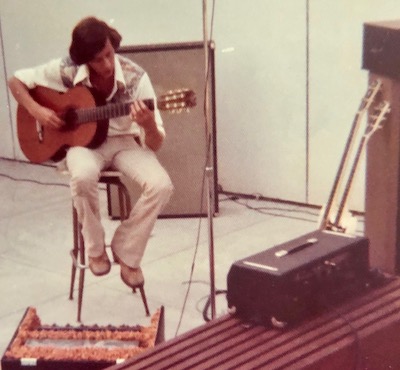 As I mentioned earlier, the 70’s were more about prog rock in Chicago in the bands we loved, in the venues we attended, in our family and in our entire circle of musicians/friends. I will say that even though Apocalypse was ultimately short-lived, none of us really stopped when the band stopped. Mike went on to build a recording studio in the basement of his home and we worked on recording his solo album Waiting for Autumn (1982) and then once his career in jingle writing started to take shape, he went on to run a studio with Marty O’Donnell, which ultimately led them into writing for video games. Gail always was busy performing professionally, at churches and taught. And even though I went to work for an Ad Agency on Chicago’s Michigan Avenue while I raised my family, I began creating a portfolio of classical guitar pieces that all came pouring out of me when we started Salvatori Productions in 1995.
As I mentioned earlier, the 70’s were more about prog rock in Chicago in the bands we loved, in the venues we attended, in our family and in our entire circle of musicians/friends. I will say that even though Apocalypse was ultimately short-lived, none of us really stopped when the band stopped. Mike went on to build a recording studio in the basement of his home and we worked on recording his solo album Waiting for Autumn (1982) and then once his career in jingle writing started to take shape, he went on to run a studio with Marty O’Donnell, which ultimately led them into writing for video games. Gail always was busy performing professionally, at churches and taught. And even though I went to work for an Ad Agency on Chicago’s Michigan Avenue while I raised my family, I began creating a portfolio of classical guitar pieces that all came pouring out of me when we started Salvatori Productions in 1995. Tom Salvatori: Mike is still working full-time with the composing team at Bungie, Inc., and is very pleased to be making scores and soundtracks that are highly respected in the video game industry and well received by his target audience.
Tom Salvatori: Mike is still working full-time with the composing team at Bungie, Inc., and is very pleased to be making scores and soundtracks that are highly respected in the video game industry and well received by his target audience.